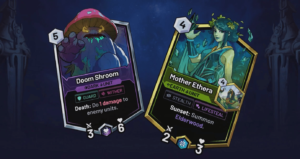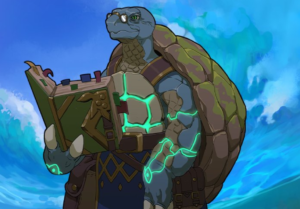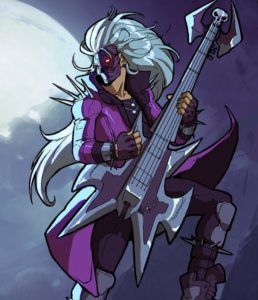MissaurusRex’s Complete Beginner’s Guide to Skyweaver – Part 2
Welcome to part 2 of my comprehensive Skyweaver beginner guide. If you missed part 1, be sure to check the links to the other parts of my guide:
⦁ Overview of the Skyweaver interfaces, cards, and game modes
⦁ Overview of Heroes/prisms and understanding card phrasing
⦁ Core game mechanics and “out-of-decking”/conjuring
⦁ The attachment system & enchantments
⦁ Playing the game and turn order
⦁ Deck building for beginners
By this point, you should be very familiar with the game menus and have some initial familiarity with cards after playing with the bot. Maybe you decided to jump into some discovery games, and found that you were very quickly overwhelmed by the amount of information. This is normal! Skyweaver is a very difficult game with a lot of things that can happen at once which can be hard to keep track of at first, especially if you are very new to card games. Expect to lose a lot because everyone does at first!
In this guide, I will start to break down the most important and fundamental concepts of the game that will (hopefully) make your beginner experience much easier. I will discuss:
⦁ Prisms and Heroes
⦁ Reading cards
⦁ Elements
⦁ Definitions of key terms
In Skyweaver there are currently 5 Prisms: Strength, Agility, Wisdom, Heart, and Intellect, and each Prism has 120 cards. The Prisms are similar to Heroes in Hearthstone, Regions in Runeterra, and Colours in Magic as they are ways to restrict deck building and reflect their own unique playstyles. Explaining each Prism’s playstyle goes a bit beyond this beginner guide, but here is a quick summary:
Strength: Big units and ways to buff those units
Agility: Smaller and quicker units to beat down your opponent rapidly
Wisdom: A more defensive playstyle with lots of healing and removal
Heart: Death effects and recycling cards from your graveyard
Intellect: Weaker units with powerful effects, duplicating spells and units
For more information about all of the Prism playstyles, check out these links:
https://www.skyweaver.net/news/design-strength
https://www.skyweaver.net/news/design-agility
https://www.skyweaver.net/news/design-wisdom
https://www.skyweaver.net/news/design-heart
https://www.skyweaver.net/news/design-intellect
The Heroes represent the different combinations of Prisms. In Skyweaver, you can play/build a deck with one Prism, or with a combination of any two Prisms. There are a total of 15 Heroes, made up of every possible combination of Prisms. There are pros and cons to playing with either one Prism or two that goes a bit beyond this part of the guide but will be reviewed in more depth in the deck-building portion of this guide. To summarize, when you play with one Prism you are restricted to a deck of 25 cards, whereas when you play with two Prisms you are restricted to a deck of 30 cards. While playing with two Prisms gives you more options, your deck is bigger meaning that your deck may be less consistent. When playing with one Prism, your deck is smaller meaning that you have a higher chance of getting through more of your cards in a game. In Discovery, however, both players play from decks of 25 cards regardless of if they choose to play with one Prism or two.
When playing with two Prisms, there is no restriction on how many cards of each Prism that are allowed in the deck. For example, if you build a Strength and Hearth deck you could put 30 heart cards in the deck if you wanted to.
In Skyweaver there are 8 elements: Air, Dark, Earth, Fire, Light, Metal, Mind, and Water. Elements and Prisms are not related, and sometimes new players confuse the two. An Element simply indicates the elemental type of the card. Every Prism can play any assortment of Elements in their deck, and every Prism has access to cards belonging to every Element. The purpose of Elements is to have synergies between cards of similar Elements. The closest analogue to other games is tribes. For example, Hearthstone has “Demons” and “Beasts,” and Magic has “Elves” and “Dragons,” and Runeterra has “Celestial” and “Poro.” The only important thing you need to understand right now is that you can identify the Element of a particular card when you are playing the game, that way when cards say something like: “Draw your lowest cost fire unit,” you can figure out what card you are drawing from your deck.
The most important part of card games is reading – and knowing how to read them is important. Now I know you know how to read otherwise you wouldn’t be here, but there are some very subtle nuances that can be missed when you’re new the game. You might do something you did not intend to or might not understand why something isn’t working the way you thought it did. I am here to help you out! I do recommend watching the video portion of this guide to see in-game examples in real time. These are the fundamental card phrases in Skyweaver:
Ally/Allies: Any ally that you have, including units and your Hero.
All characters: Refers to every character on the battlefield, including yours or the enemies Heroes and Units.
All units: Refers to every unit on the battlefield, including yours or the enemies.
Card: Refers to both card types, spells and units.
Character: Everything on the battlefield, including units and Heroes.
Enchanted: The character the enchant is attached to (more on enchants soon).
Enemy/Enemies: Applies to every enemy, Heroes or units.
Highest/Lowest cost: The highest or lowest printed mana cost on a card.
Its player: Signifies an event that will happen to the player effected by the card’s resolution.
Left-Most: The card/unit/Hero that is the furthest to your left. This can apply to cards in yours or the enemy’s hand, or units on the battlefield. This view is always relative to your orientation regardless of which side of the board it refers to.
Right-Most: The card/unit/Hero that is the furthest to your right. This can apply to cards in yours or the enemy’s hand, or units on the battlefield. This view is always relative to your orientation regardless of which side of the board it refers to.
Gain X mana: The amount of mana you will receive that you will be able to use immediately.
Gain X max mana: The amount of maximum mana you will receive.
Other/another: Refers to units other than itself.
Spell: Refers to spell cards only.
Target: Refers to any character on the battlefield. Any unit or Hero that can be targeted on the board, including yours or the enemies.
Target ally: Applies to any ally, units or the Hero.
Target ally unit: Applies to any ally unit only.
Target enemy: Applies to any enemy, unit or Hero, that you can target.
Target enemy unit: Applies to any enemy units only that you can target.
Target unit: Applies to any unit that can be targeted on the battlefield, including yours or the enemies. Cards that apply to target units cannot be applied to Heroes.
To: Signifies a condition must be met to resolve that cards effect.
Top/Bottom X dead card(s): Refers to the top or bottom number of dead cards in your graveyard, including units and spells.
Top /Bottom X dead unit(s): Refers to the top or bottom number of dead units in your graveyard.
Top X dead spell(s): Refers to the top or bottom number of dead spells in your graveyard.
Unit: Refers to unit cards only.
You don’t need to memorize everything, the take-home message is to make sure you read cards carefully, especially because some cards will contain combinations of the above phrases. If you’re not sure what something means, you could always refer to this guide.







3 thoughts on “MissaurusRex’s Complete Beginner’s Guide to Skyweaver – Part 2”